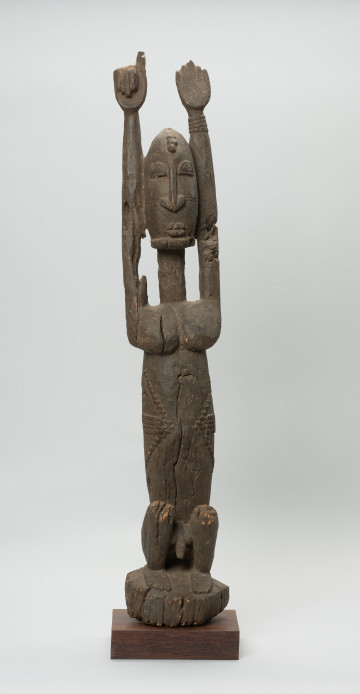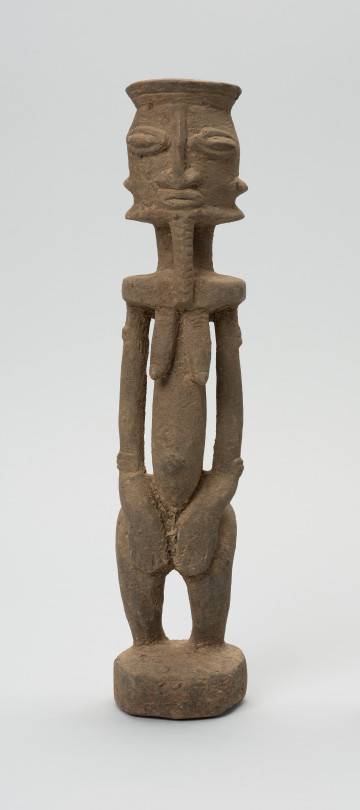
Figure - man
między 1901 — 1950
National Museum in Szczecin
Part of the collection: Collection of Dogonian art
The Dogon are people living in the Bandiagara, Duentza and Bankass regions, in the south-central part of the Republic of Mali. A small number of Dogon settlements can also be found in the northern part of Burkina Faso. Dogon art is created primarily for religious purposes. According to their mythology, the creator of the universe is the god Amma, but the inhabitants of the Bandiagara Escarpment pay little attention to him, concentrating instead on various types of ancestors, who are intermediaries between the living and the ultimate forces of the universe. Most Dogon rituals are associated with them. Among the ancestors, several categories can be distinguished. One of them is the first ancestors created by Amma - four pairs of perfect twins. In the oral tradition, the names of the male twins have only survived: Binu Seru, Amma Seru, Lebe Seru and Dyungo Seru. According to the Dogon, all humanity is descended from them. Ogotemmeli Dolo, a Dogon sage in a conversation with Marcel Griaul expressed himself about them in these words: There were eight principal ancestors, born of the first pair of people formed by the god. The four older ones were male, the four younger ones - female. However, thanks to a unique gift of nature, they were able to impregnate themselves, because each of them was double and bi-sexual. Eight families of the Dogon originate from them.Another group of Dogon ancestors include various binu, i.e. immortal ancestors from the time when there was no death on earth. On the other hand, the last most numerous category is the deceased members of all the families called wagem, which translates as those who are far away. Statues representing ancestors are placed on numerous altars dedicated to them.
Ewa Prądzyńska
Author / creator
Dimensions
cały obiekt: height: 50,5 cm, width: 9 cm
Object type
figure
Creation time / dating
Creation / finding place
Identification number
Location / status

między 1901 — 1950
National Museum in Szczecin

między 1951 — 2000
National Museum in Szczecin

między 1951 — 2000
National Museum in Szczecin
DISCOVER this TOPIC
National Museum in Lublin
DISCOVER this PATH
Educational path